Full Guide To Purple Agate vs. Amethyst (This Is The Difference)
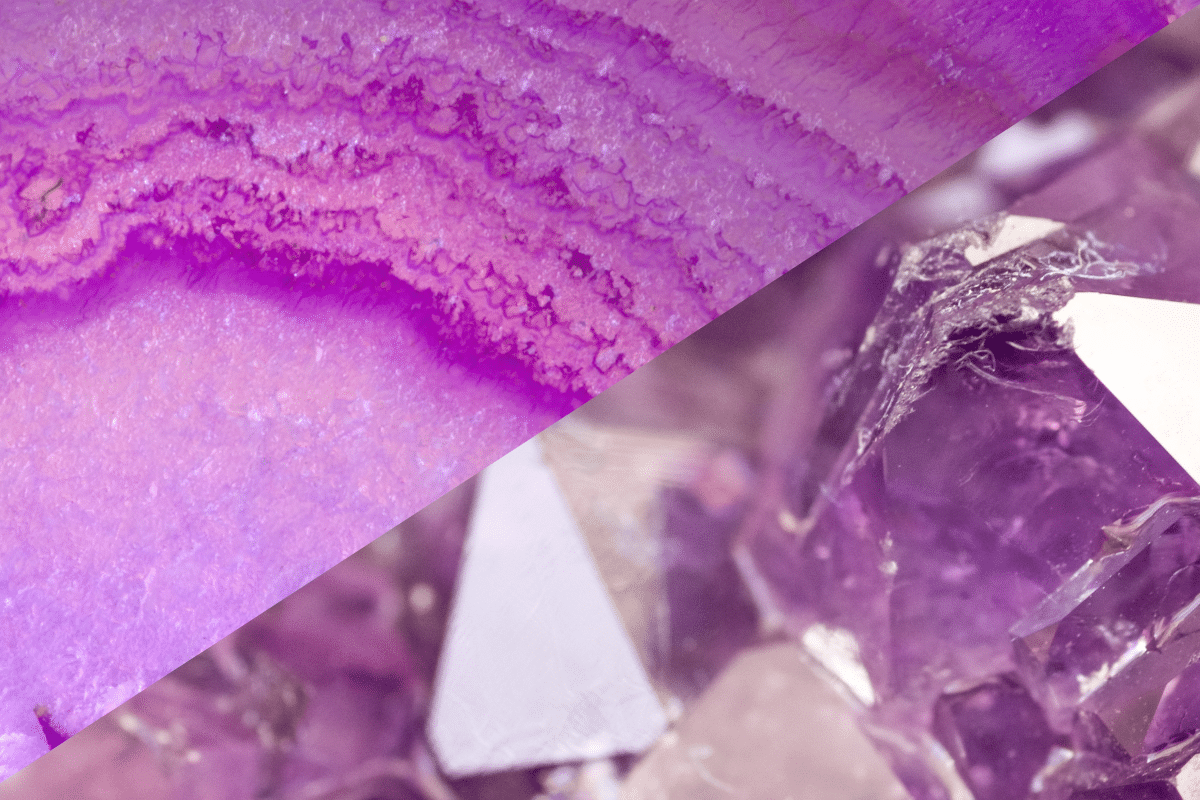
In order to work with our crystals effectively, we need to understand their properties. With crystals that look similar or have similar uses, such as purple agate and amethyst, it can be difficult to determine which one to work with. The answer should always be; the one that you are drawn to the most. However, if you are looking to find the difference in physical appearance as well as metaphysical properties, you’ll find your answer here.
Amethyst generally has a softer color and more glass-like shine than purple agate. Moreover, purple agate is translucent to opaque, whereas amethyst is translucent to transparent. Amethyst is often used to relieve anxiety, whereas purple agate is popular to enhance intuition.
Continue reading if you want to know more about the (physical) qualities of these stones, as well as how you can use them in your spiritual practice.
Want more help or information? If you have any more questions after reading this blog post or want a personal answer for your specific situation, join the free Facebook group! We promise you’ll get an answer from either our team members or a community member.
Purple Agate vs Amethyst – How To Tell The Difference?
In order to understand the difference between these two stones, we can look at the color, shape, pattern, clarity, and more. Below we’ll describe all these aspects in detail.
Chemical Composition
The purple agate stone belongs to the chalcedony quartz mineral family, which is a microcrystalline form of quartz. This means that you can only see the crystal structure when using a microscope.
The mineral composition of purple agate is mainly silica and other trace elements. Its structure is amorphous, meaning it cannot be identified by a standard shape. The reason for this is that they are formed in cavities where volcanic activity has taken place. Note though, that agate are often sold as slices.
Amethyst is a popular purple stone from the quartz family of minerals. The stone is a silicate that consists of silicon dioxide.
Also read: Can Agate Go In Salt? (Blue Lace, Moss, Iris And More)
Color
Both stones are purple, but amethyst generally has a softer purple color than agate.
Agates occur in a variety of colors. Besides purple, also referred to as violet agate, the stone is available in green, yellow, blue, brown, and gray. The purple variety receives its color from the iron and manganese that is present in the stone. Natural purple agate often receives treatments in order to enhance the color.
Amethyst often comes in an attractive purple color, which varies from light to dark hues, but can also be found in pink, black or yellow. The latter is also referred to as citrine. Purple amethyst may show red or blue secondary hues when observed under a source of light.
Also read: Citrine vs Heat-Treated Amethyst: This Is The Difference
The purple color on amethyst stones results from irradiation of iron trace elements present in the stone during crystallization. The color zoning effect, meaning the color is distributed unevenly, is caused by the amounts of iron incorporated into the crystals in different stages of growth. The darker the purple shade, the more iron. The color zoning on amethyst affects its price in the market. Uniform coloration is valuable and most desirable.

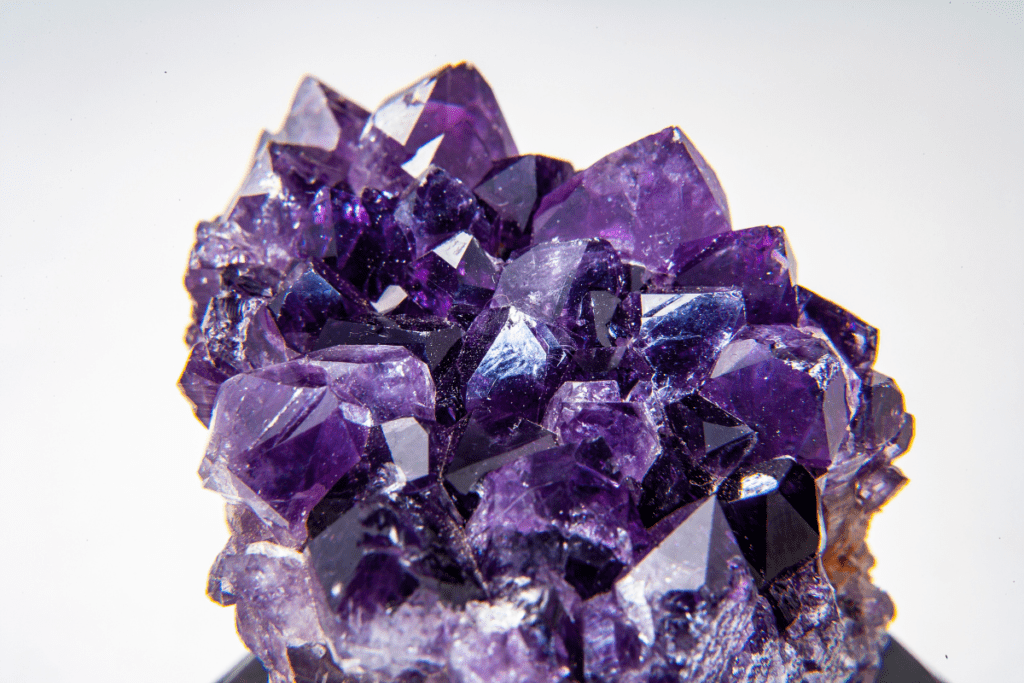
Pattern and Clarity
Purple agate is translucent to opaque, whereas amethyst is translucent to transparent. Additionally, amethyst’s shine is glass-like, while agate is waxier.
In terms of pattern, agate is known for having banding formations. For purple agate, the bands can be different shades of purple as well as white. Amethyst can have some color variations within the stone and perhaps some colorless streaks as well.
This agate stone breaks at an uneven fracture, meaning that the surface of a broken off agate is rough and irregular. On the other hand, amethyst breaks at a conchoidal fracture, which means the surface of the fracture is curved. You’ll often find this type of fracture in glass as well.
Also read: Can Agate Be In The Sun? (Blue Lace, Moss, Iris And More)
Hardness
Purple agate and amethyst both rate 7 on the Mohs scale.
If you’re unfamiliar, the Mohs scale of hardness determines a stone’s hardness by measuring how scratch-resistant it is. According to this scale, a stone can scratch any other mineral with a lower score. For reference, talc is a 1, whereas diamond is a 10.
With both scoring a 7, this means they are durable stones that can be worn daily and can be used in jewelry, carvings, and ornaments.
Location
Purple agate originated and was first used in Egypt and other ancient civilizations. The stone in the modern day can be found in Australia, Morocco, Brazil, and Mexico.
Amethyst forms in igneous, metamorphic, and sedimentary rocks. Most of the mineral comes from Canada, Morocco, Myanmar, and Mexico. Amethyst geodes are found in Brazil.
Care
Care should be taken when handling and storing these stones to prevent damage.
We recommend cleaning your stones by either running them under tap water or cleaning them with a damp cloth. If you’d like, you can use some detergent as well. Make sure to dry the stones afterward. Although it won’t cause immediate problems, we never recommend leaving stones to soak, as this can turn them dull or brittle.
Apart from physically cleaning the stones, you might want to clear them from negative energies. This is highly recommended if you used them for their metaphysical properties.
The reason for this is that these stones absorb low vibrations. Every month or so, you want to remove these energies from the stone so you can continue to use it. After cleansing, it is recommended you also recharge the stones to make sure they are full of positive energy to share with you.
Purple agate and amethyst can be cleansed and recharged by moonlight or using cleansing crystals like selenite and clear quartz. The stones can also be left in clean salty water for a few minutes to tune it to its original vibration, but again, beware that this may cause damage in the long term.
We do not recommend leaving amethyst in the sun, as they are likely to fade when exposed to direct sunlight for longer periods.
Also read: Can Agate Go In Water? (Blue Lace, Moss, Iris and More)
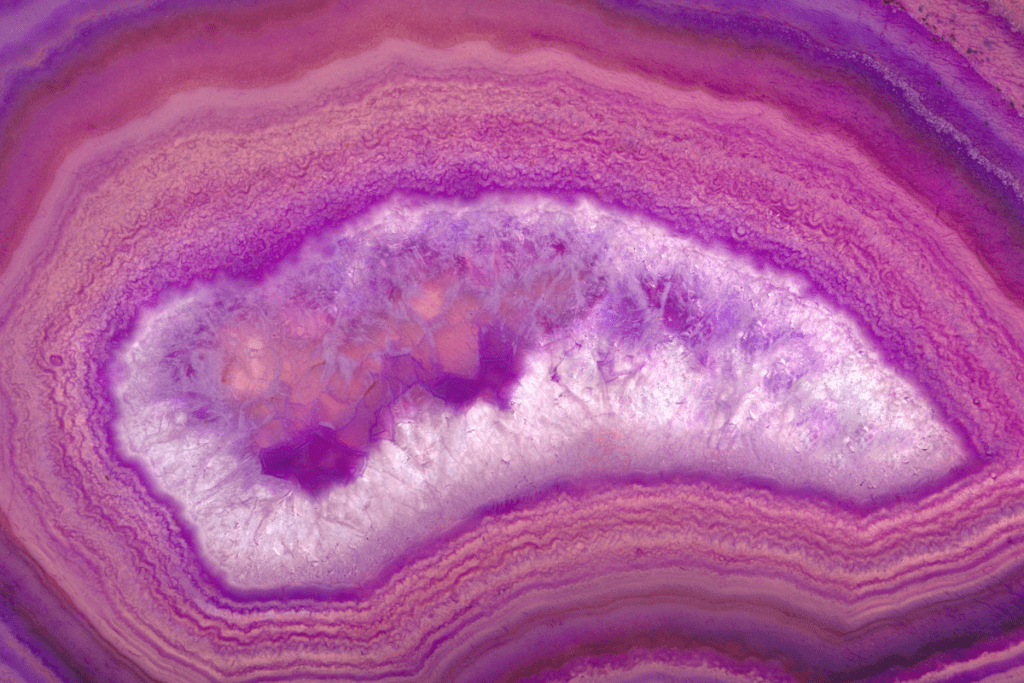
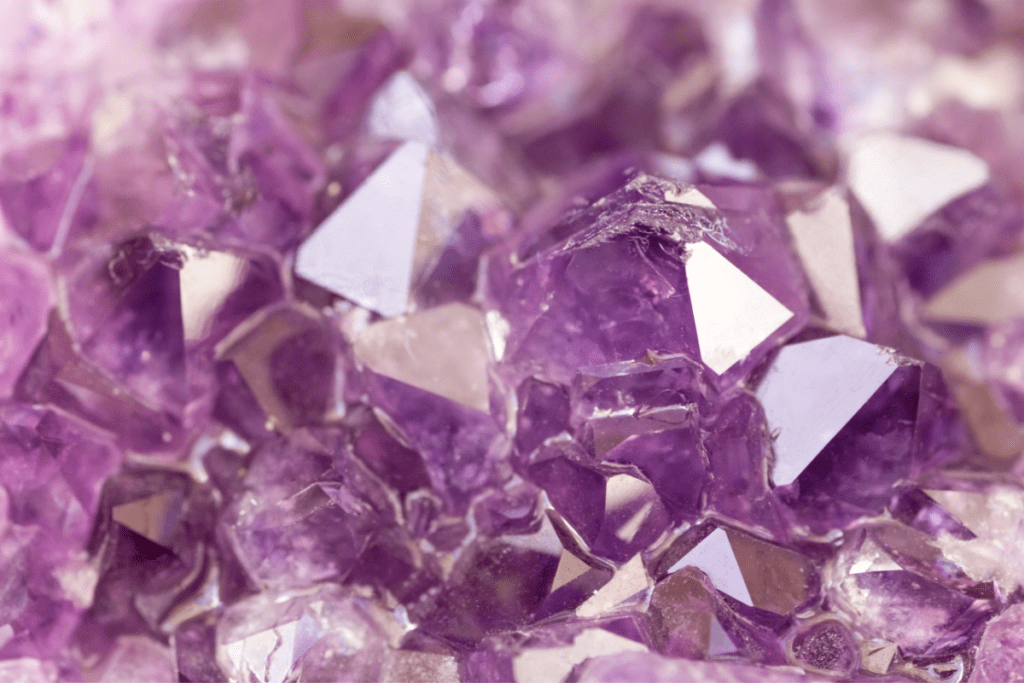
Properties
Both stones are used for crystal healing. Purple agate is used for bringing harmony, protection, creativity, good luck, and balance. Amethyst is used to calm anxiety and overthinking, as well as active your intuition.
Beware that crystals are never a replacement for professional medical help. If you have any issues, see a doctor first and follow their advice.
Purple agate encourages introspection, intuition, and clarity of thought and emotion. You can think of this stone as a reliable partner through emotional cleansing and processing trauma. As emotional baggage can affect both your mind and physical body, this stone will help you feel more secure and efficient and improve concentration.
In terms of physical issues, purple agate is used to help with ailments related to the digestive, uterine, and lymphatic systems.
On the other hand, amethyst is believed to bring comfort, protection, and healing to its bearer. The crystal is also associated with creativity, spirituality, and passion energies.
In physical healing, amethyst stones help with hormonal imbalances, and digestive system problems and boost immunity. Amethyst is also believed to relieve headaches and improve the skin’s appearance.
Uses
There are many different ways to use these stones. Below we’ll outline a few options for you.
Jewelry
This is probably the most common way to make the most out of the benefits of these stones all day. It is made into pendants, necklaces, bracelets, rings, and earrings. These pieces can be worn as accessories and also as talismans for protection and fortune.
We recommend placing both stones as close to the third eye chakra as possible (between the eyebrows), as this will make them most effective. As a result, earrings or a tighter necklace would probably be your best option.
Meditation
The purple agate and amethyst are a good inclusion during meditation sessions. The stones are placed on the third eye or crown chakra for maximum healing benefits. They will help quiet your thoughts and put you into a meditative state, which is vital to achieving your intention.
If you’re wanting to use these crystals to meditate, following a guided meditation might be beneficial. Especially if this is your first time. Below you’ll find a guided meditation that might be helpful. Although it is made for amethyst specifically, you can use it for purple agate too.
Feng shui
The purple agate stone is a great stone for good Feng shui, especially in spaces used for self–expression, and concentration. The stone can be used both at work and at home because it brings healing where it’s needed the most. Amethyst can be used to decorate living or office spaces for peace and tranquility. The stone contributes to good Feng Shui of our spaces and personal energies.
Chakra Association
Purple agate and amethyst are mainly connected to the crown chakra, but can also be used for the third eye chakra.
The third eye chakra is found in the middle of your forehead. The chakra represents psychic abilities, subconscious, insight, and knowledge. The crown chakra, on the other hand, is located at the top of the head and represents awareness, creativity, and divinity. Placing either stone on these chakras will enhance higher levels of knowledge and enhance our spiritual abilities.
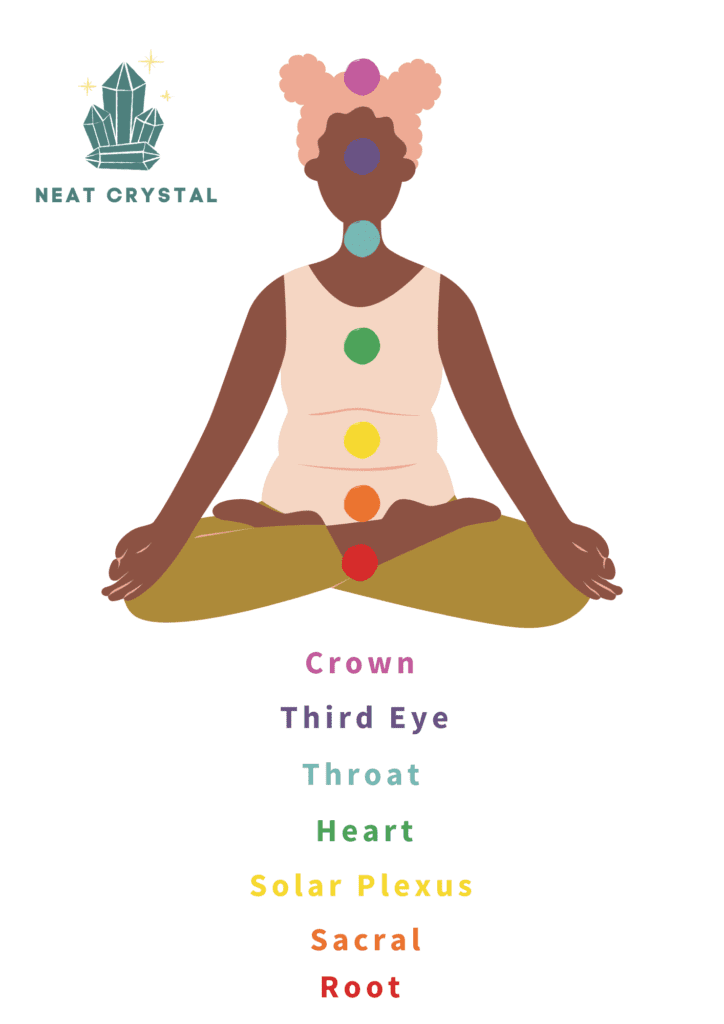
Also read: What Chakra Is Moss Agate? (Full Guide)
Zodiac Association
Purple agate is a mystical (Tibetan) birthstone for September and an ayurvedic (Indian) birthstone for May. As a result, it has a special connection to the signs of Virgo and Libra, born in September, and Taurus and Gemini born in May.
Amethyst is the traditional birthstone for February. This means that it resonates best with people born under Pisces and Aquarius zodiac signs, born in that month.
Wearing, or working with, your birthstone can help you bring out the best of your zodiac signs and allows you to work on your weaknesses.
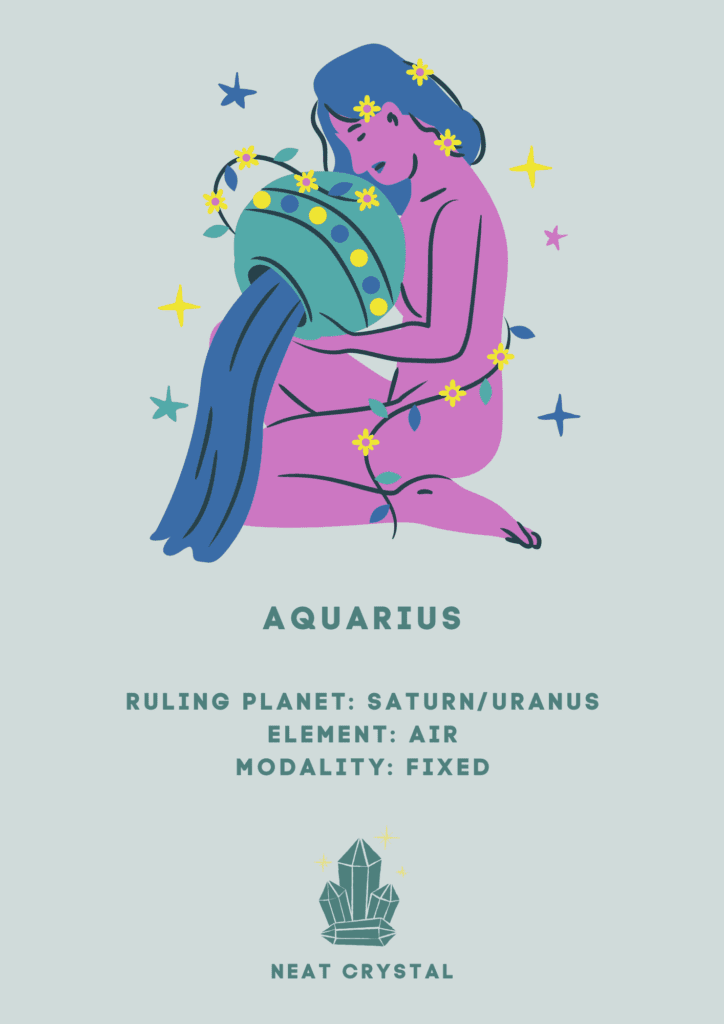
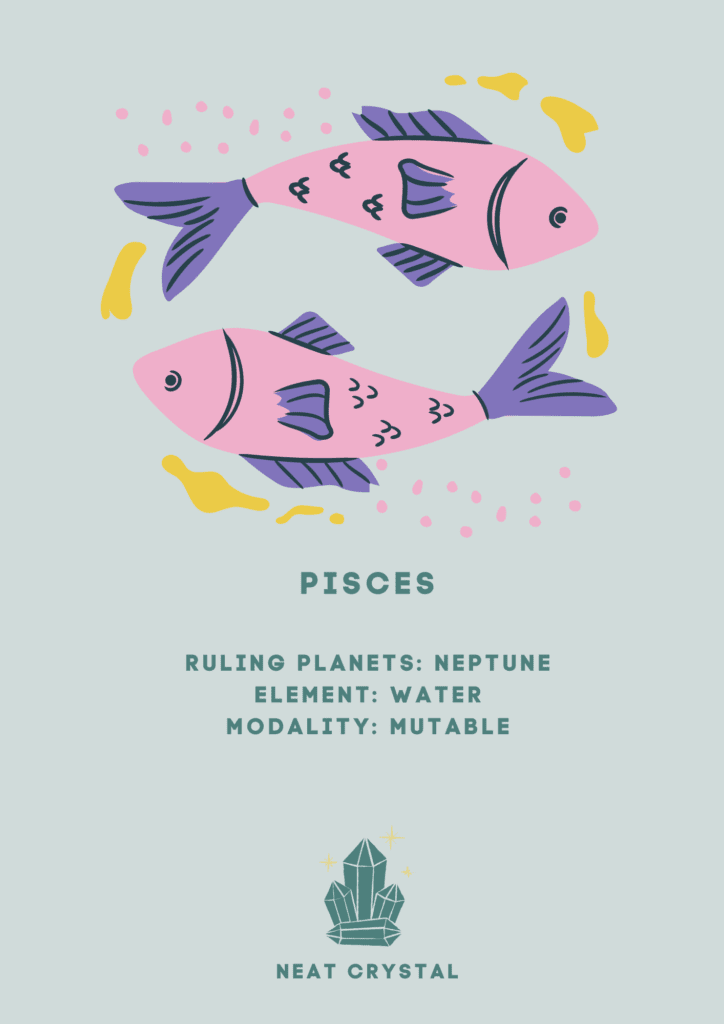




Also read: The Complete Guide To Amethyst And The Zodiac Signs
Element Association
Purple agate is associated with the water element, while amethyst is associated with the air and water element.
Many cultures have developed the idea of elements to explain nature. In the west, this idea was created by the ancient Greeks and consisted of 4 elements: Earth, Air, Fire, Water. In India, another element is added: Akasha, representing the foundation of the other elements.
The 4 elements represent the following:
- Earth for personal growth, stability and security
- Water for love, friendships and emotions
- Air for intellect, wisdom and communication
- Fire for energy, passion and action
By looking at a crystal’s or gemstone’s properties, we can determine which element fits best.


Also read: What Element Is Amethyst? (Purple, Pink, Chevron, Ametrine)
Ruling Planet
Purple agate is ruled by Jupiter, while amethyst is ruled by both Jupiter and Neptune. When we talk about planets as rulers, we simply mean that the planet has more influence over a zodiac sign or crystal than the other planets.
As a planetary ruler, Jupiter represents luck, growth, wisdom, and optimism. Neptune, on the other hand, represents spirituality, dreams, and the subconscious.
People who resonate with Jupiter are curious, wise and care free. The planet’s influence encourages tolerance, optimism and calm when faced with difficult situations.
Neptune affects creativity and spirituality. People who resonate with the planet are kind and forgiving, and can also be delusional.
Numerical Vibration
Both stones vibrate at the frequency of 7. The number holds a lot of significance in numerology and religion. Number 7 is a spirit number that represents completion, wisdom, and spirituality. People who resonate with this number are analytical introverted, flexible and spiritual. The number is also used to represent Neptune.
Best Combination
To get the most out of our work with crystals, it can be incredibly beneficial to pair and combine crystals with similar properties. This way, they can strengthen and enhance each other. Below you’ll find some interesting options.
- Purple agate can be combined with any other agate variety during chakra work and healing. This stone, however, works well when combined with clear quartz for the crown and third eye chakra balancing and activation.
- Agate varieties are combined with jasper varieties in making healing crystal grids because of their color varieties. Crystal grids are symmetrical, laying out charged crystals in a pattern that represents your intention.
- Amethyst pairs well with rose quartz as a remedy for anxiety and depression. This combination reminds you to step back and take care of yourself first, especially when going through tough times. It can also be used to restore faith and trust in love relationships.
- Clear quartz combined with amethyst brings profound healing and protection from negative energies.
- Lastly, amethyst can be used together with a tiger’s eye for grounding and clarity of thought in decision-making.
Also Read: Amethyst and Rose Quartz: Combination for Anxiety and Attracting Love

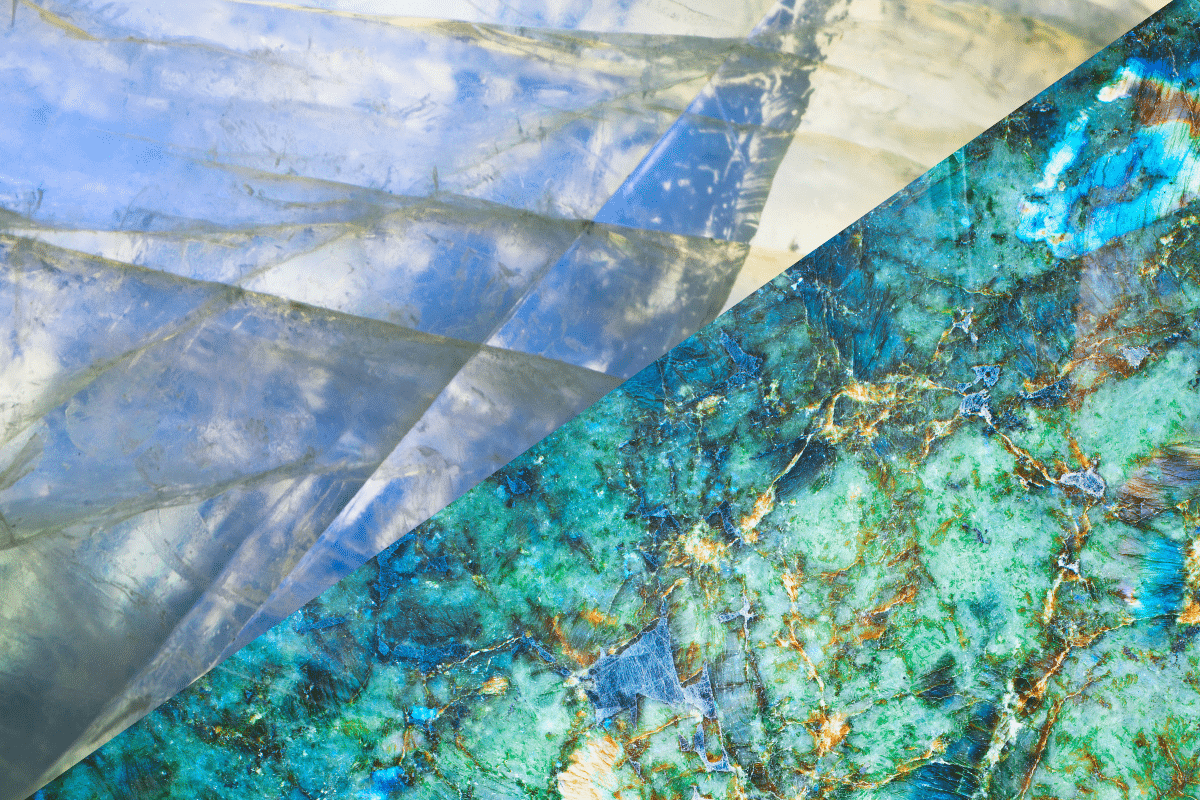
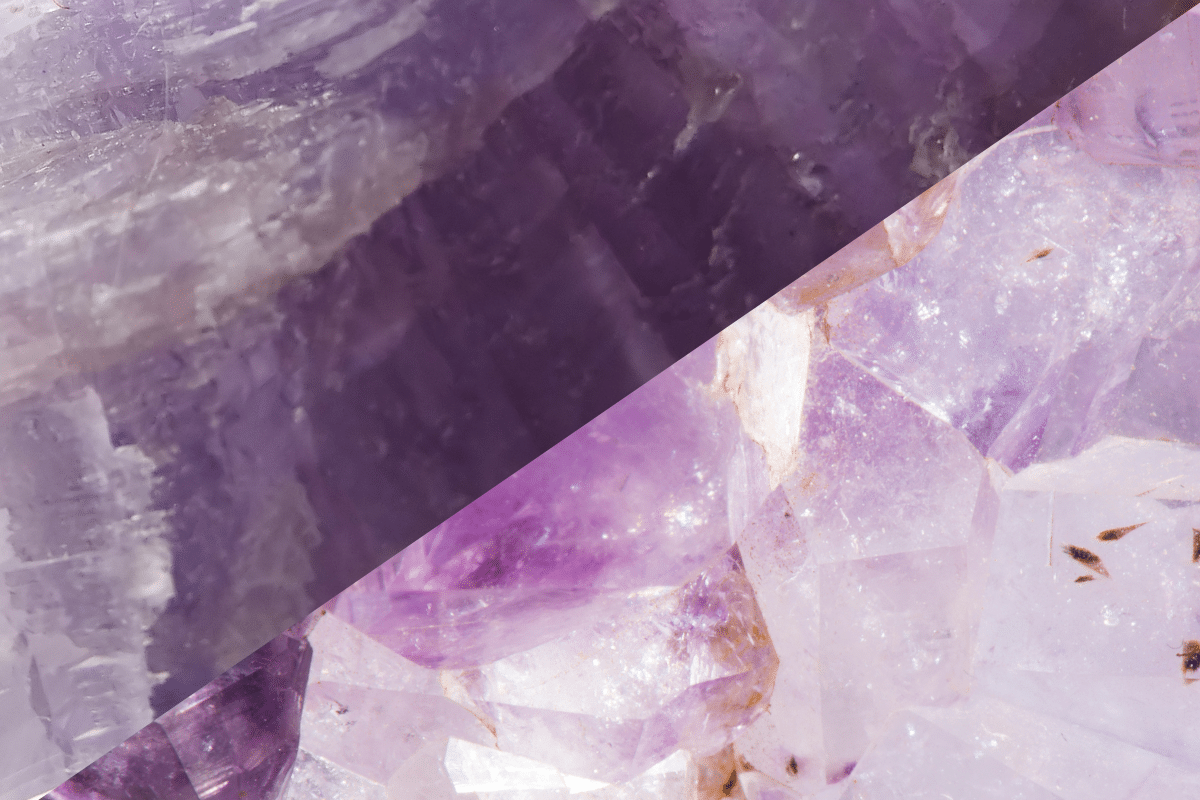

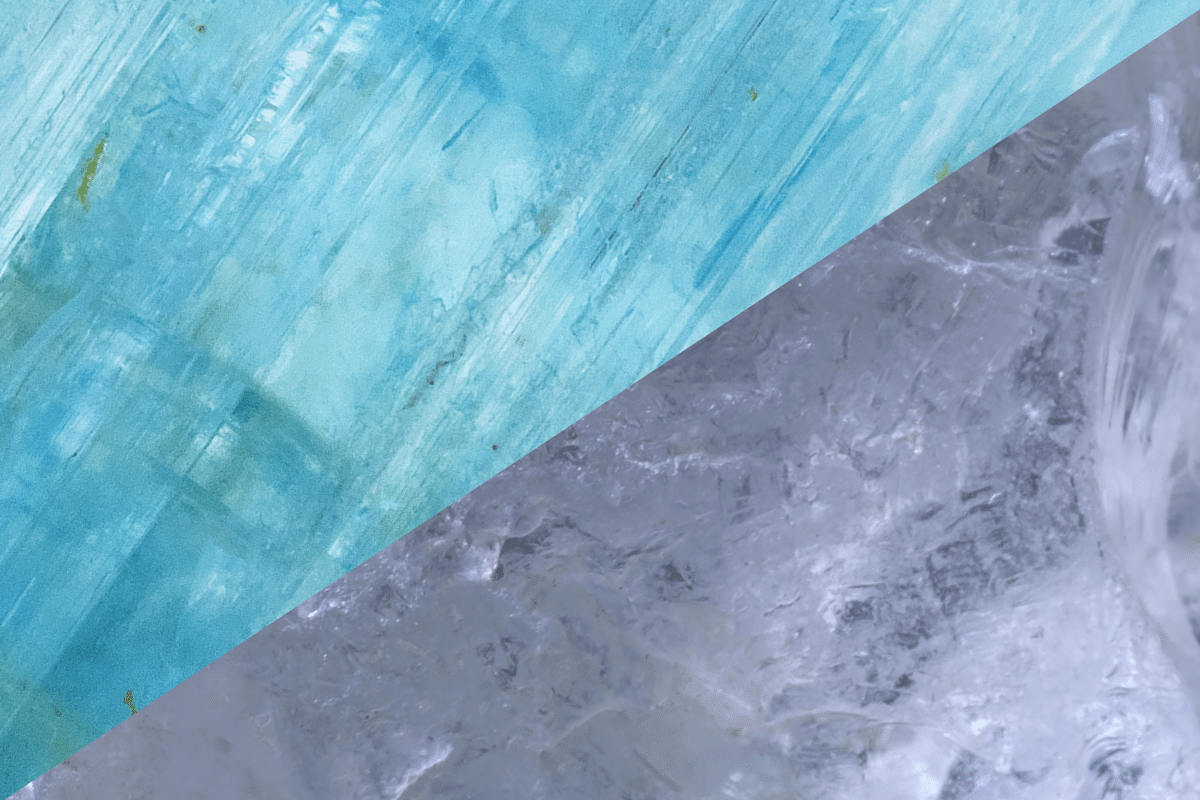
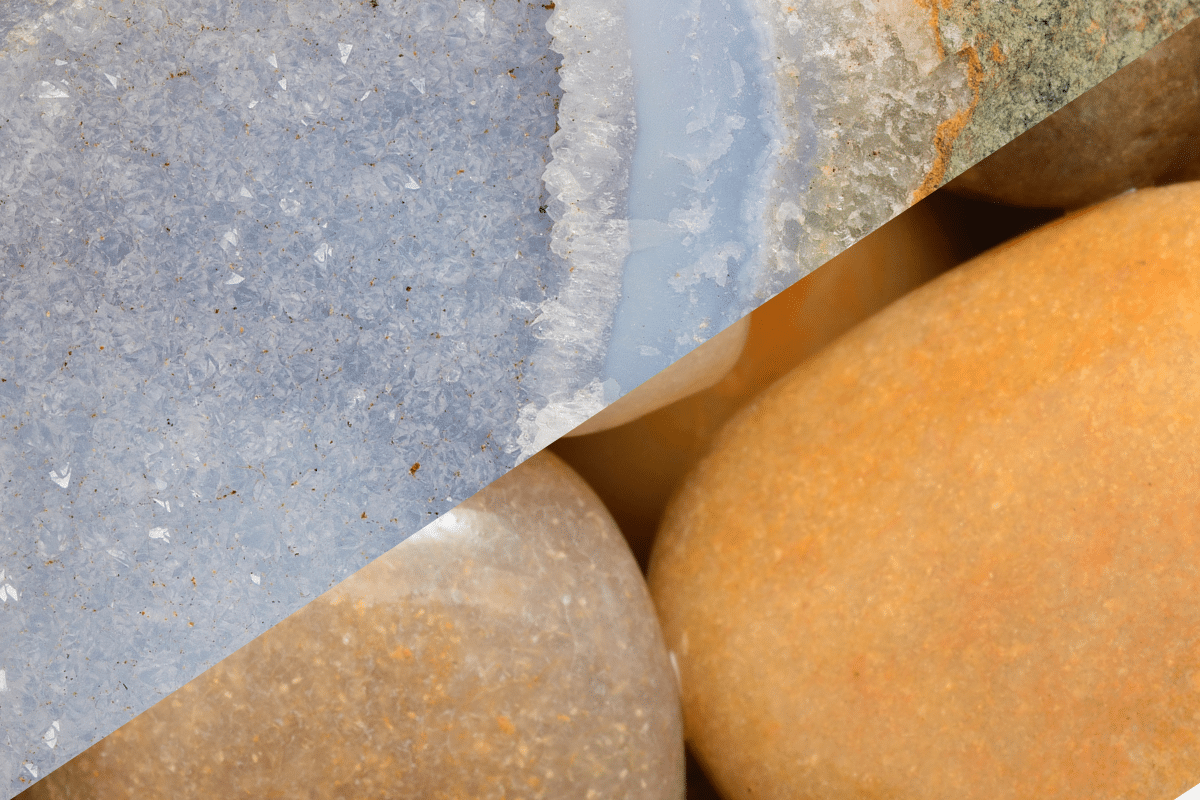
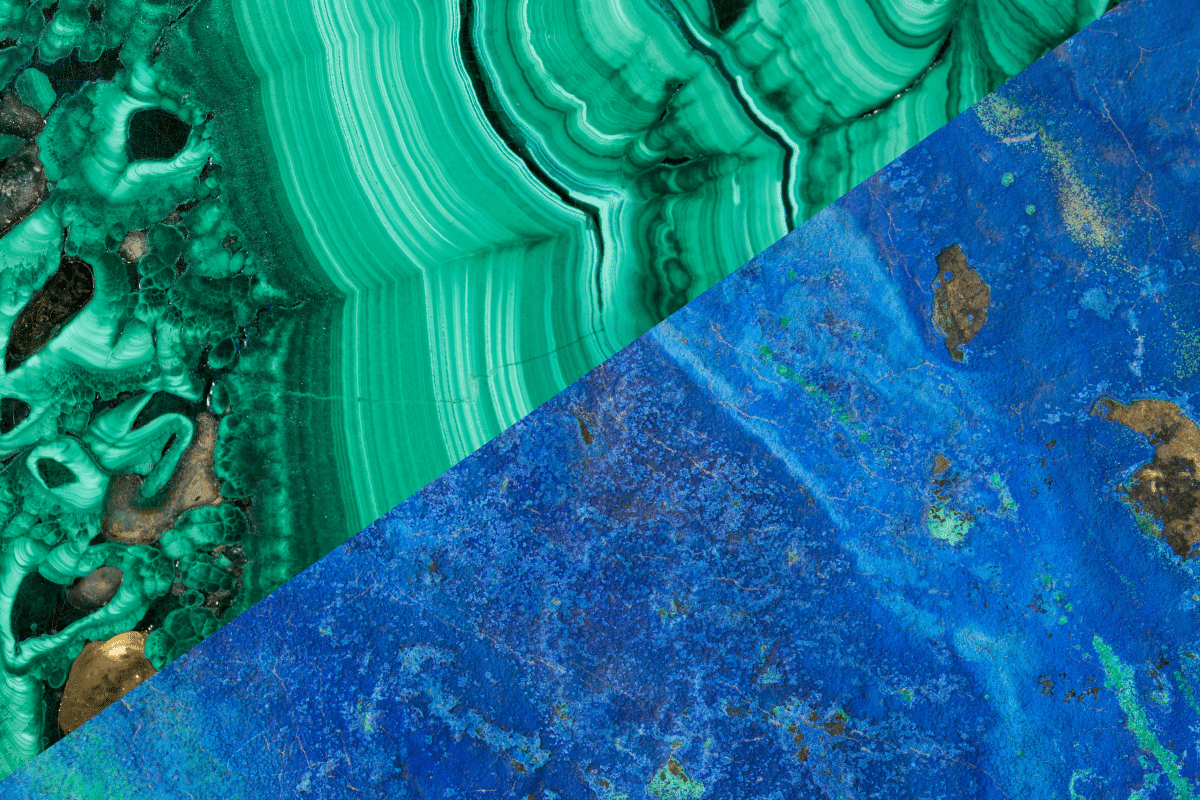
4 Comments